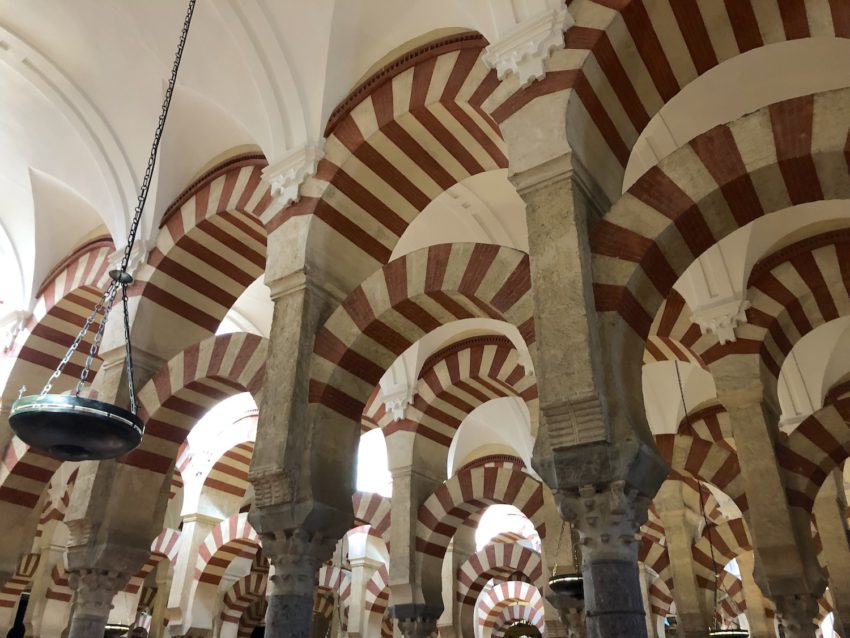The magnificent Mezquita in Cordoba is without doubt one of the world’s great buildings, once a mosque and now a cathedral. It’s also somewhere to shelter from the city’s oven-like heat, for even at the end of September the thermometer was recording late 30s centigrade. I really struggle with the heat and spent much of my visit sweating like a Turkish wrestler, which wasn’t exactly pleasant for everyone.
Emerging from the shade into the full glare of the Andalusian sun is like being invited to stand a little too close to a furnace, so we spent much of our time dashing from one bit of shade to another and taking refuge in the ancient mosque and other historic buildings. This wasn’t as easy as it sounds because Cordoba was full of tourists, who clogged the narrow streets of the historic old town at all hours of the day. I wasn’t expecting the city to be quite so busy, especially heading into October, but the age of mass tourism has well and truly arrived.
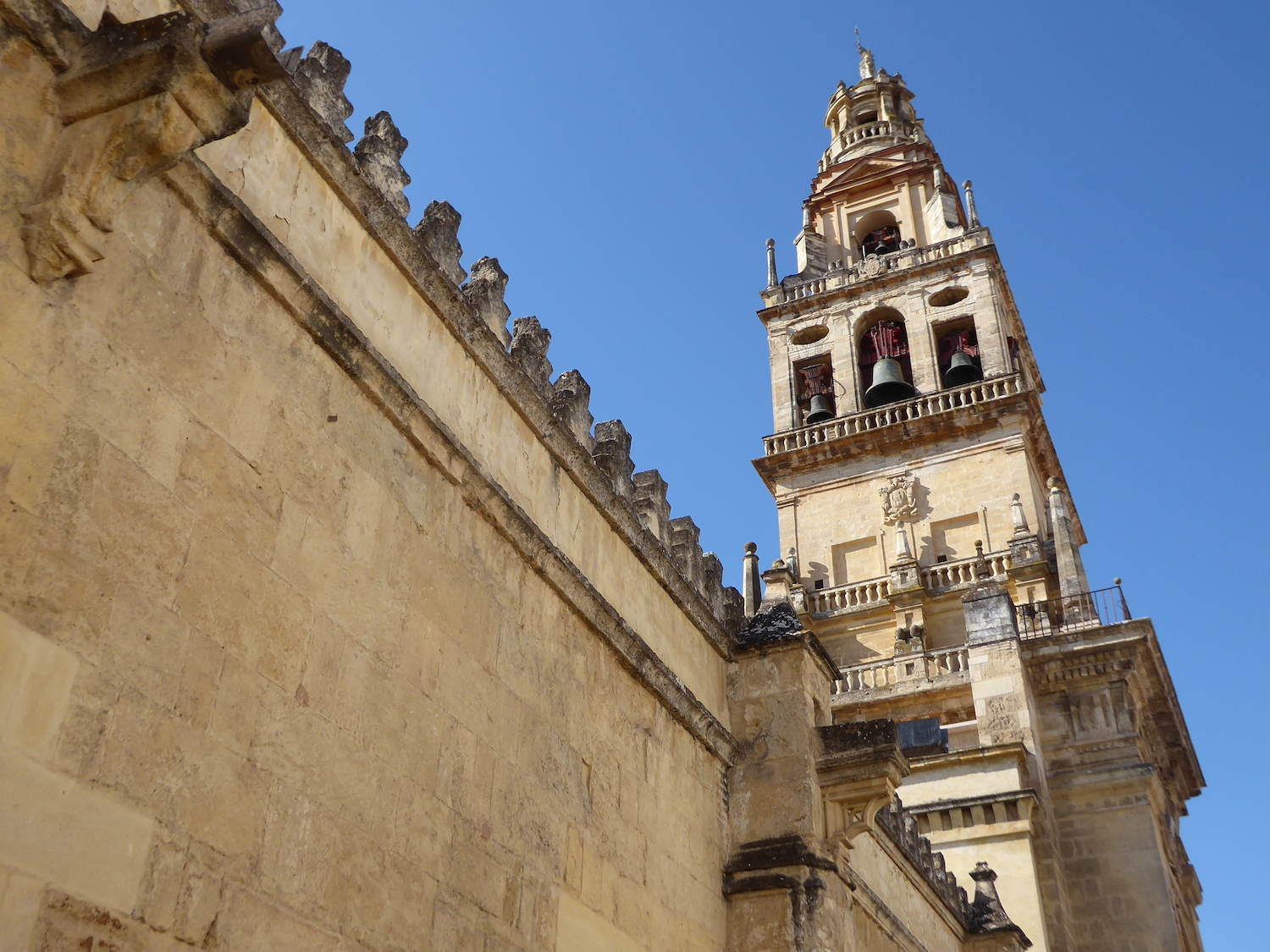
It was hot but not quite as hot at Malaga Airport when we arrived on our BA Cityflyer flight from London City Airport. The sun blazed down as I drove us north for two hours on that Friday afternoon, through a landscape of arid fields, olive groves that stretched to the horizon and imposing hills. It was the start of an eight-night holiday in Spain, taking in Cordoba, Granada and Malaga. Our base for the first four of those nights was the new H10 Palacio Colomera hotel, a grand mansion on busy Plaza de las Tendillas just north of the old town. We’d decided on such a long stay for one city because we were keen to spend as much time relaxing by the hotel’s patio pool as exploring.
Patios, or courtyards, are another of Cordoba’s claims to fame. Much like Palma in Majorca, they’re havens of shade, pot plants, water features and calm. Sadly most are hidden behind closed doors but we spotted a fair number when the owners had left their doors open for passers-by.
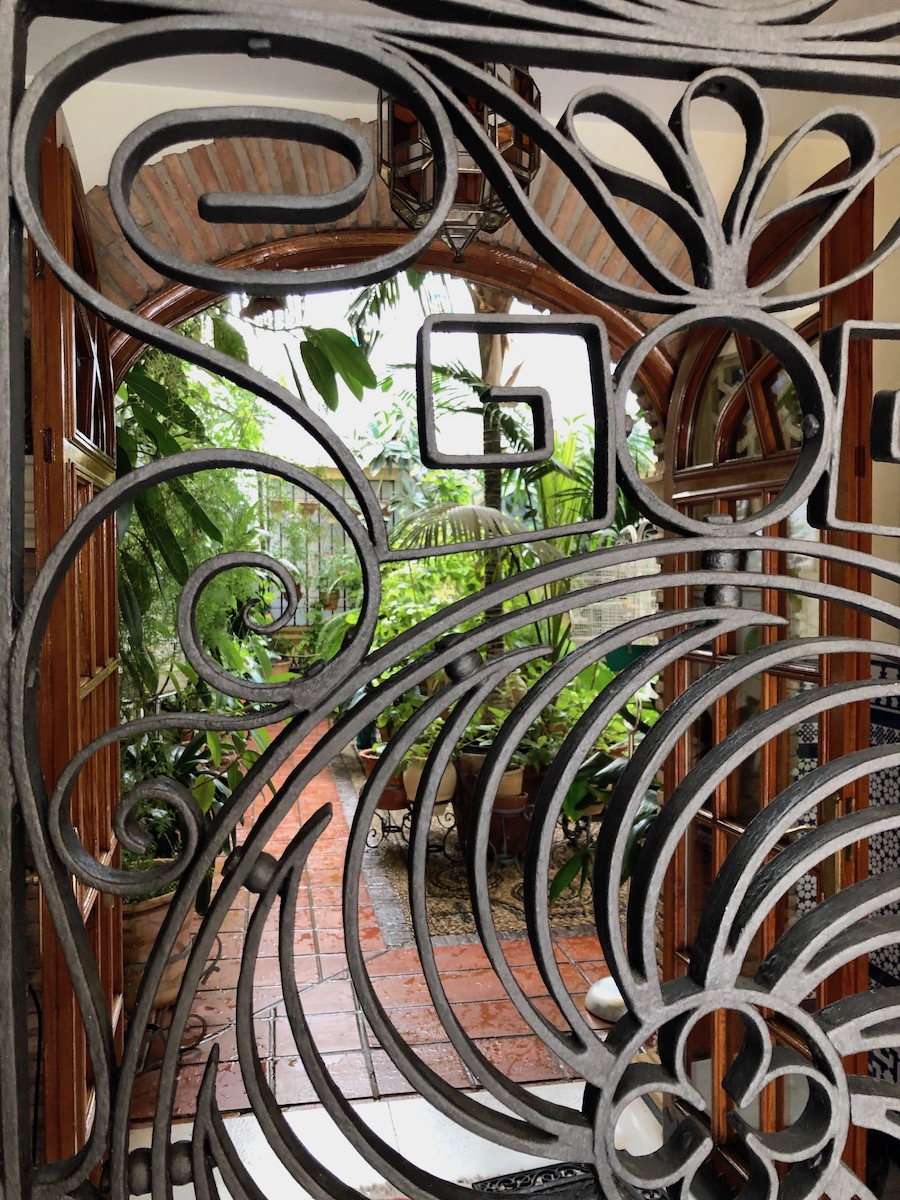
We wandered down to the waterfront and the Guadalquivir river on our first evening in town. The streets there are lined with bars and restaurants that are particularly popular with locals, who are probably wise to avoid the touristy places in the streets around the Mezquita. It was a pleasant enough part of town, except for the atrocious smell of sewage that swirled from the drains and was really quite stomach-churning.
The Mezquita and the historic old town that surrounds it is a UNESCO World Heritage Site but many of the central streets are tourist-tactic, full of garish restaurants and souvenir shops. The historic Jewish district has winding cobbled alleys, plenty of shade and huge amounts of charm and atmosphere. Exploring it the following day was a real treat.
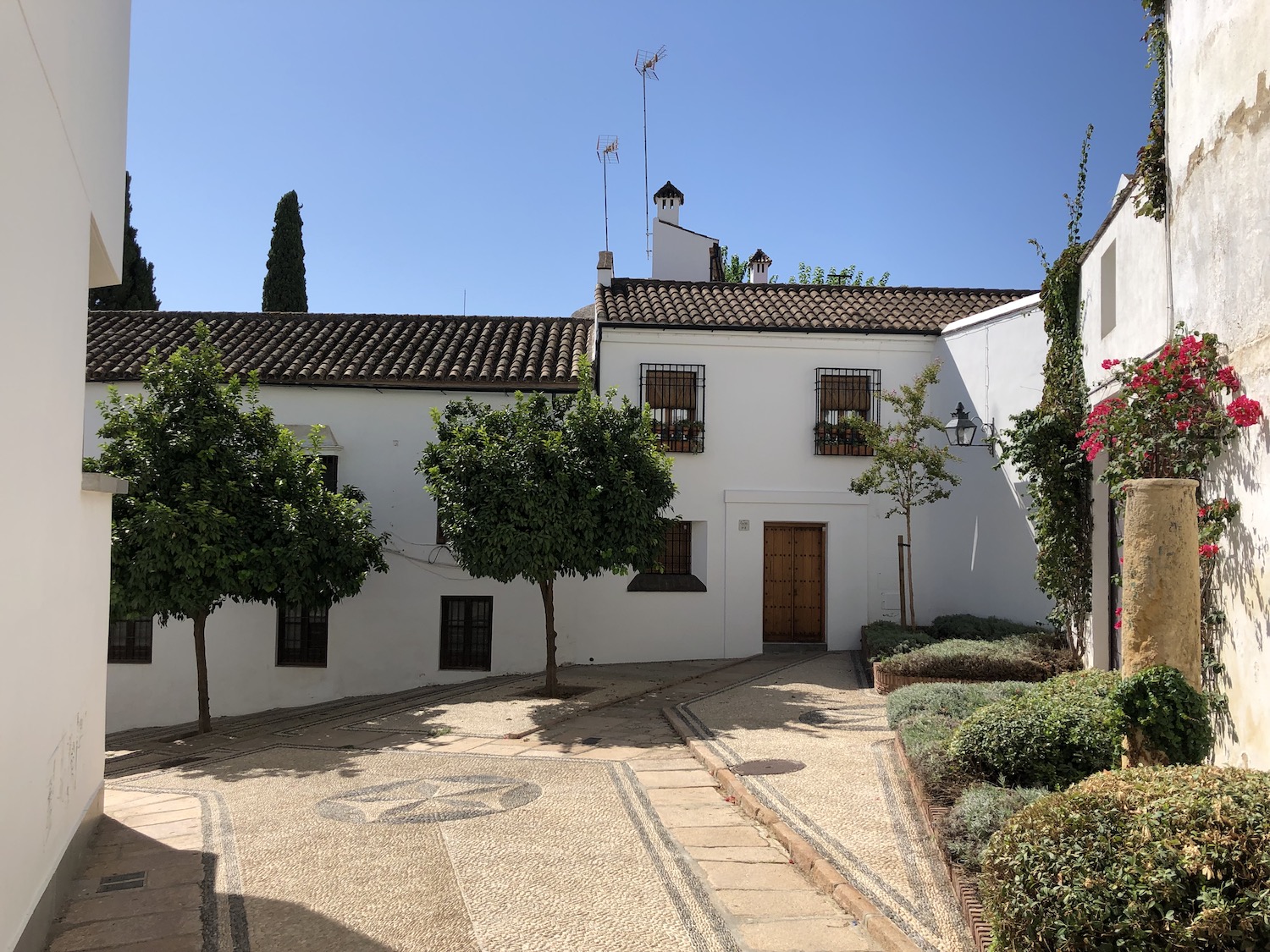
The great mosque and cathedral stands at the heart of the district, a huge building that stretches almost as far as the river and a much revamped Roman bridge. Typically for us we arrived to find the mosque closed for a few hours so we popped back to the hotel for a few hours of pool-side relaxation and visited the Archaeological Museum on Plaza de Jeronimo. Through various artefacts, including some fine Roman mosaics and Moorish metalwork, it reveals layers of Cordoban history and it does it well too. In part that’s because they’ve edited down and avoided the mistake of putting absolutely everything on display. In the basement are the remains of a Roman theatre, uncovered during recent archaeological work, but it takes a leap of imagination and the help of some audio-visual displays to picture it from the jumble of stones.
Back at the Mezquita the heat was intense but we stopped to admire the Moorish decoration on the immense outer walls, some of which has been restored. At one corner stands a bell tower that was once the mosque’s minaret, and inside the walls is a courtyard where citrus trees offer shade. The Mezquita itself provides welcome respite from the sun, and walking inside is as awe-inspiring as I’d expected it to be. The building is huge, like a mammoth warehouse but with the most extraordinary architectural details.
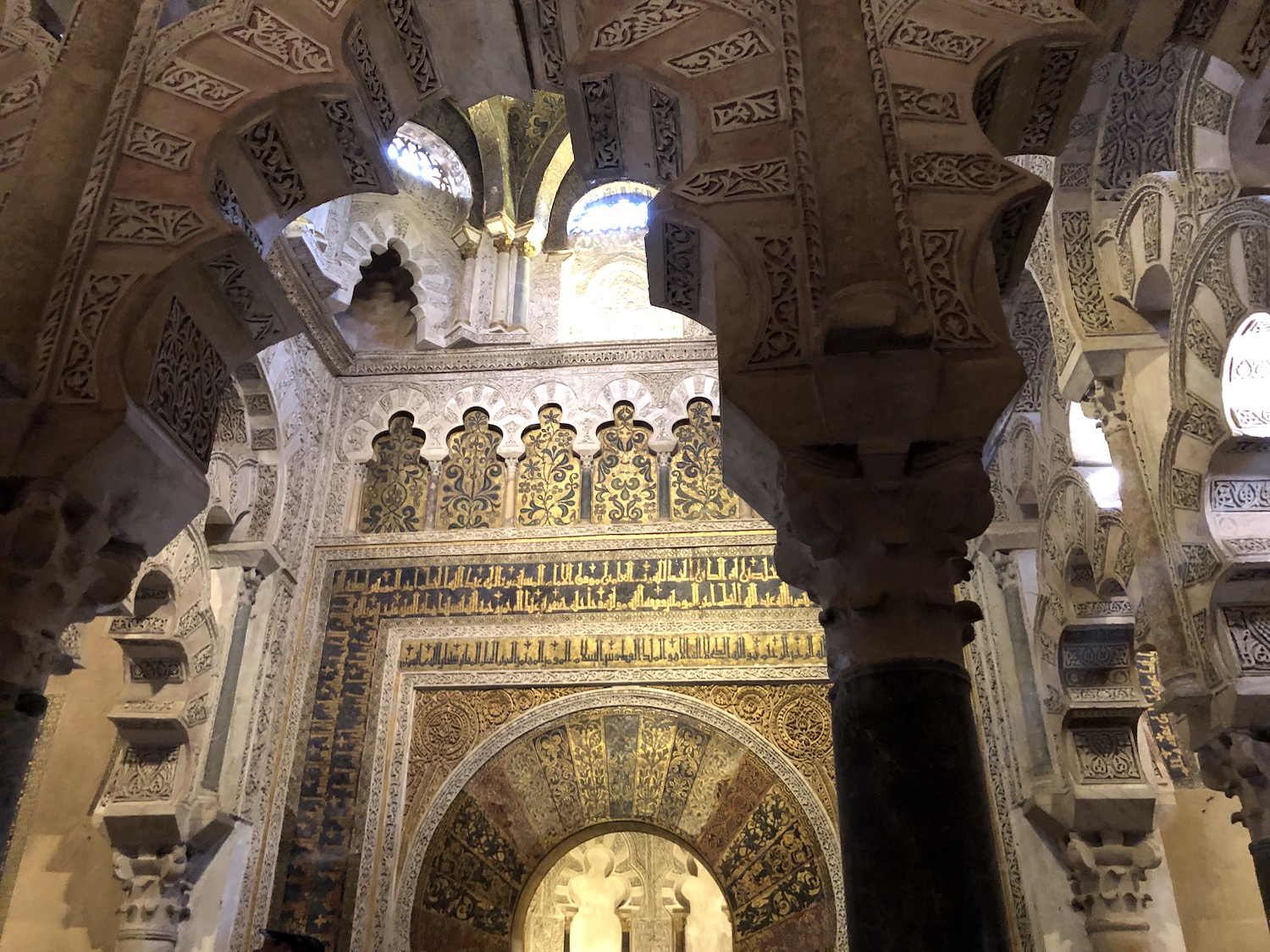
The great mosque was built in the late 8th century on the site of an earlier Christian church, which had then been shared by Christians and Muslims in the early years of the Islamic conquest. In the 13th century, when the muslims were forced out, a cathedral was built in the middle of the structure so that from the air at least it looks like a ship stranded amid the sea. The striking design has more than 800 columns supporting the ceiling with double arches picked out in alternate red and white stone. These stretch into the distance, dominating the vast space. The columns themselves vary in design because many were rescued from existing buildings, including the old Roman amphitheatre. Surprisingly, perhaps, many Islamic features survived the centuries including a stunningly-gilded prayer niche or mihrab.
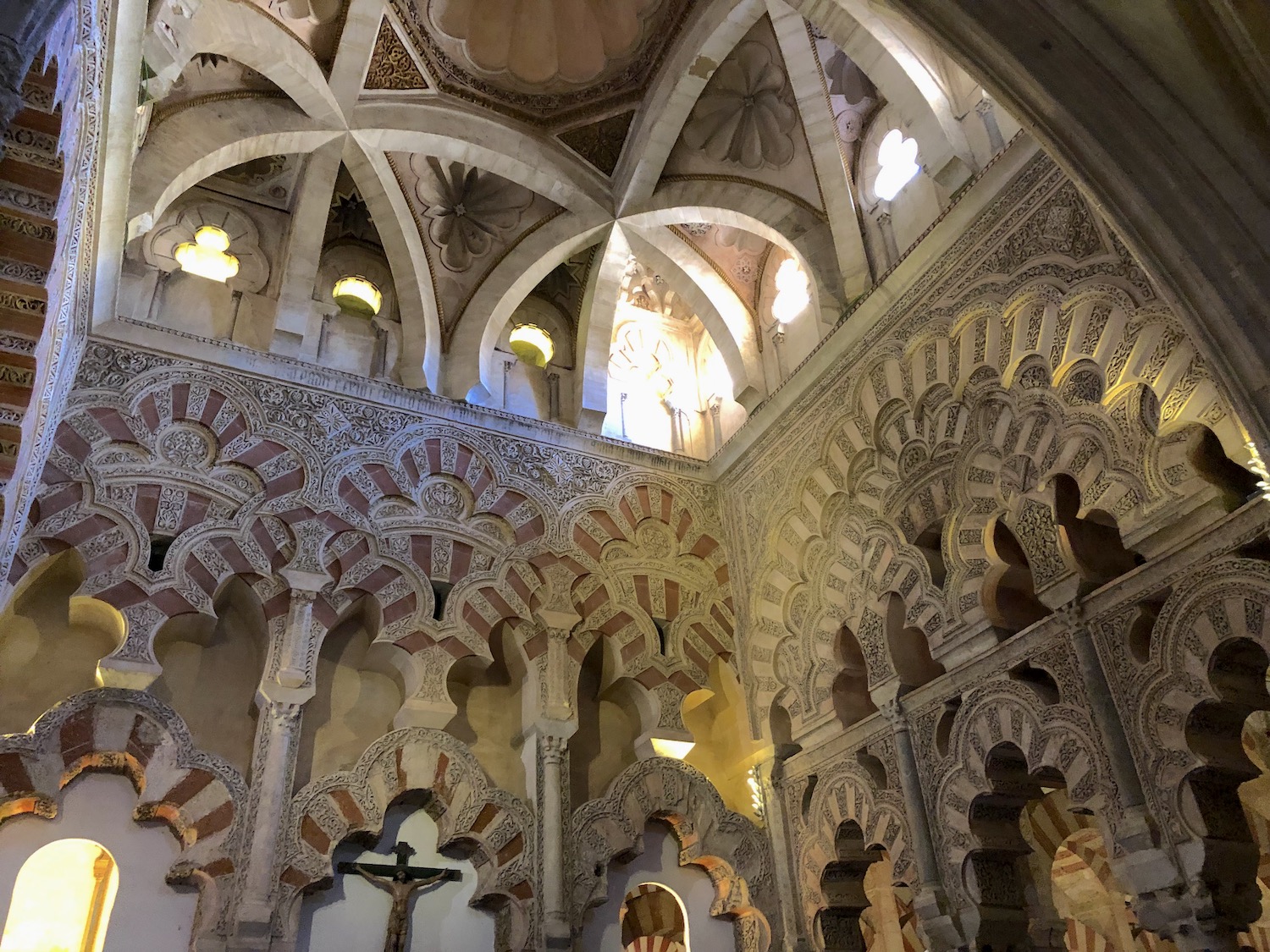
The Renaissance cathedral stands amid this splendour, and while grand enough in its own way and with a bright and elegant dome, it jars significantly with the elegant lines of the mosque and fails to live up to its predecessor. What’s worse are all the smaller chapels that have, over the years, taken over the outer walls of the building – usually sporting depressing images of death and sin. A few of the Catholic faithful kneeled and prayed but most of us wandered around, taking photos by the million. Tour groups occasionally got in the way but the Mezquita is so vast that it’s easy to escape the throng.
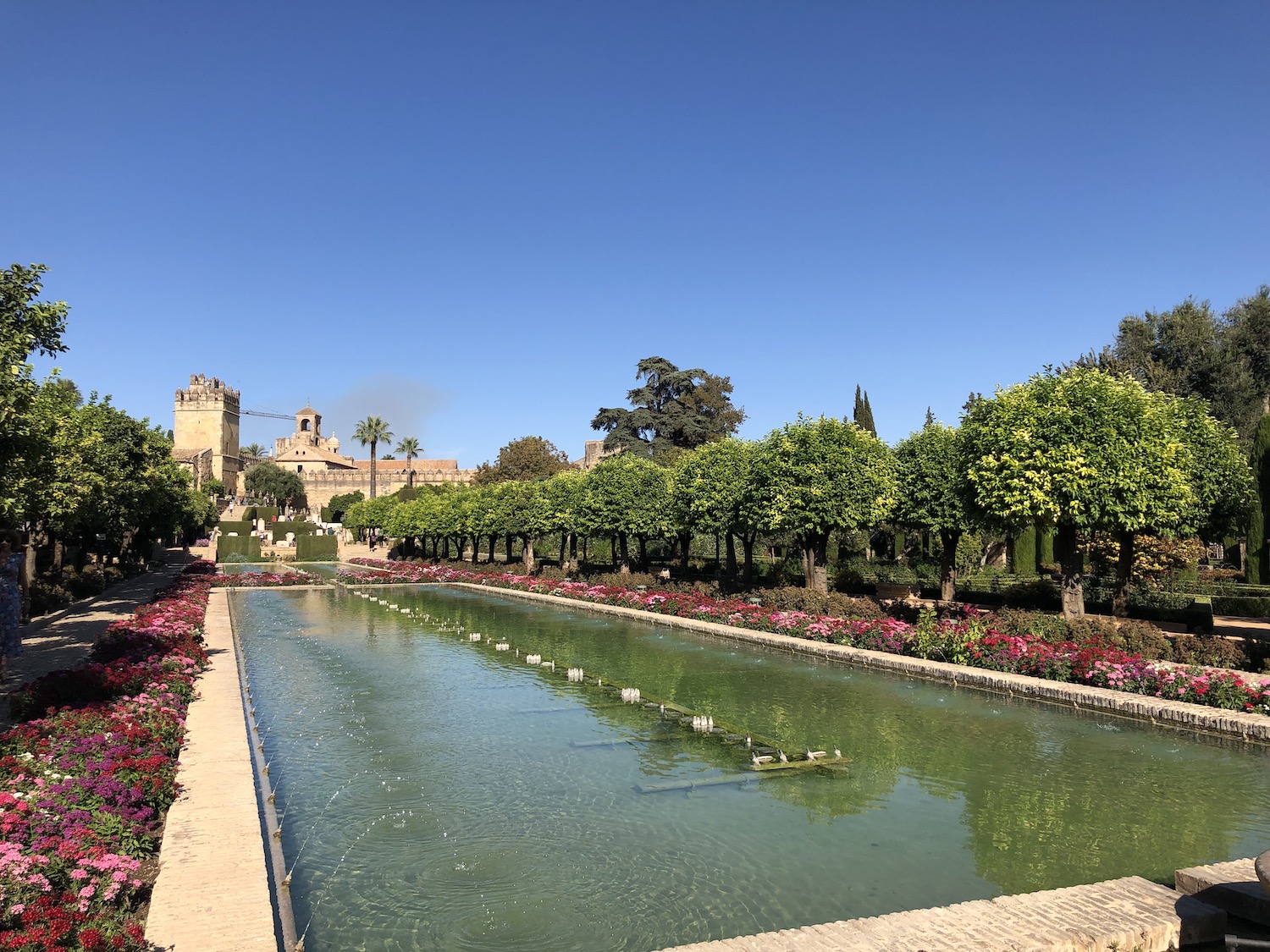
We emerged from the cool into the heat and walked the short distance to the Alcázar de los Reyes Cristianos, built for the Christian Kings in the 14th century. The building itself has very little going for it because most of the original features were ripped out when it became a prison and tribunal for the Spanish Inquisition. But it’s the gardens that visitors buy the admission ticket for, and they are absolutely beautiful. Palms, cypress and citrus trees line avenues and rectangular ponds. Elegant fountains dance and perennials and annuals provide splashes of colour. Late in the afternoon it was mercifully free of the crowds.
That evening found us back down by the waterfront, eating tapas at the popular El Paseo restaurant and drinking in the trendy La Bicicleta bar. The temperature had dropped to something pleasant and manageable and we consumed ice-cold lager in quantities that I knew would leave my guts in turmoil the next day. And that day would see us discover another jewel in Cordoba’s crown…

